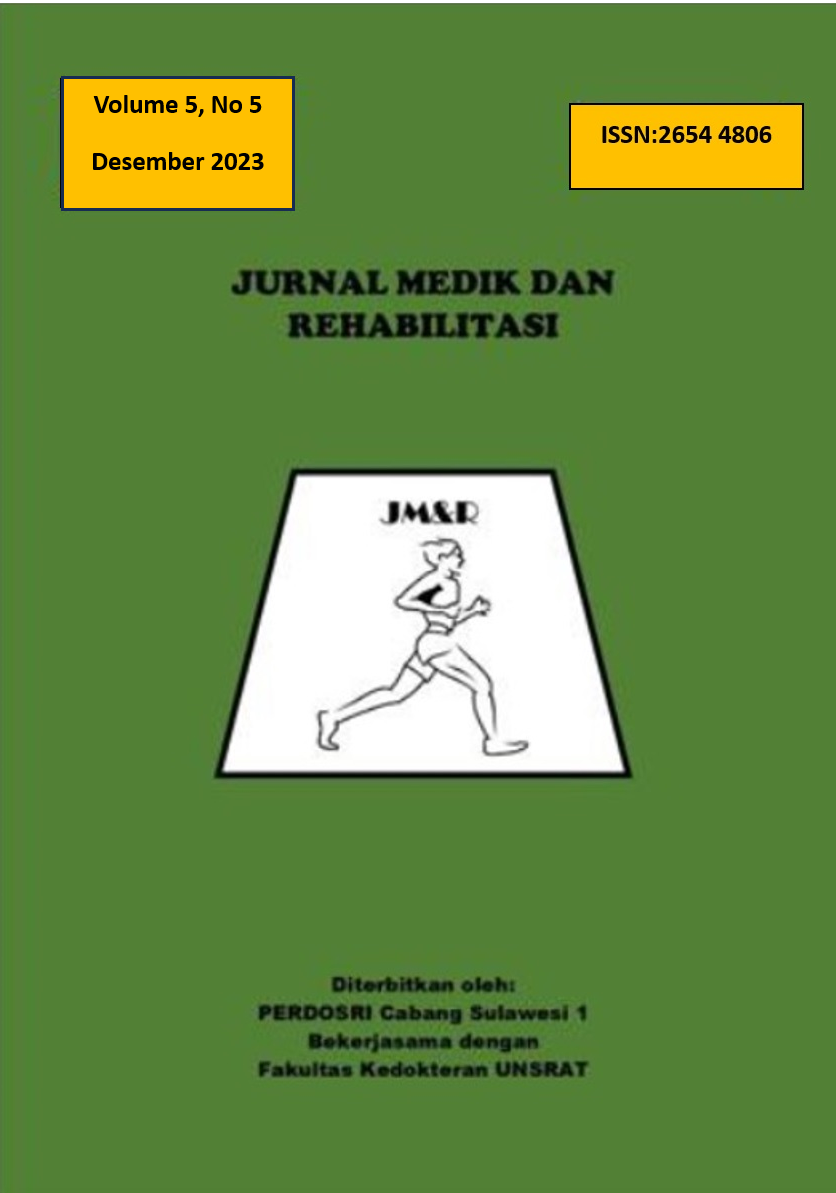MEDICAL REHABILITATION IN PATIENT WITH CEREBRAL PALSY SPASTIC QUADRIPLEGIC GMFCS V, CFCS V, EDACS V
Abstract
Cerebral palsy (CP) is the most common motor disorder among children in the world. which associates with movement control, posture, cognitive, and sensory problems from a nonprogressive lesion to an immature brain. In this case, we discuss about a girl, 3 year and 6 months old, with CP Spastic Quadriplegic GMFCS V, CFCS V, EDACS V. She has history of epilepsy since age of 1 year, after repeated seizure and repeated treatment at hospital, she was diagnosed with CP. She was using nasogastric tube (NGT) for nutrition. Movement of arms, leg, hands, feet, or discovering how her body moves could not be made. Since 2022, the patient was just lying in bed and unable to sit up. The goals in this patient divide into short-term goals (1-3 months), intermediate goals (3-6 months), and long-term goals (6 months to 1 year). Short-term goals were improve feeding ability and swallowing, educate her family, prevent respiratory and musculoskeletal complication, and reduce spasticity. For intermediate goal is improve postural control. Then, for her long-term goals were improve communication ability, improve ADL ability, and sitting independently. The rehabilitation programs with multidisciplinary team approach were needed to manage various conditional in this patient.

